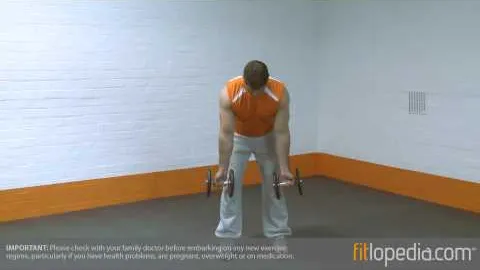
Reverse Grip Bent Over Dumbbell Row: A Complete Guide to This Effective Back Exercise
Introduction
The Reverse Grip Bent Over Dumbbell Row is a compound exercise that primarily targets the back muscles, specifically the latissimus dorsi or lats. By using a reverse grip and bending over, this exercise emphasizes the development of the mid- and upper-back muscles, while also engaging the biceps and rear deltoids. In this comprehensive guide, we will walk you through the correct form, benefits, variations, and safety tips for performing the Reverse Grip Bent Over Dumbbell Row.
Understanding the Reverse Grip Bent Over Dumbbell Row
The Reverse Grip Bent Over Dumbbell Row is a variation of the traditional Bent Over Dumbbell Row. While both exercises target the back muscles, the reverse grip alters the angle of pull, placing more emphasis on the lats. To perform this exercise correctly, you will need a set of dumbbells and a flat bench or a weight rack. Follow the step-by-step instructions below:
Benefits of the Reverse Grip Bent Over Dumbbell Row
Variations of the Reverse Grip Bent Over Dumbbell Row
Safety Tips for Performing the Reverse Grip Bent Over Dumbbell Row
To ensure safety and maximize the benefits of the Reverse Grip Bent Over Dumbbell Row, follow these important tips:
Conclusion
The Reverse Grip Bent Over Dumbbell Row is a versatile exercise that targets the back muscles while also engaging the biceps and rear deltoids. Incorporating this exercise into your training routine can lead to improved back strength, enhanced posture, and increased functional strength. Remember to start with lighter weights, focus on maintaining proper form, and gradually increase the load as your strength improves. By following the instructions and safety tips outlined in this guide, you can confidently perform the Reverse Grip Bent Over Dumbbell Row and experience its numerous benefits.
If you're looking for a gym, fitness club or yoga studio, you've come to the right place.
You can find information about gyms in your area. Browse catalog of gyms and find gyms with classes which are you looking for.
On gym page you can find simple information like address, phone or website. You can find list of available classes. You can check availability of personal training or small group classes. On place page you can also see information about open hours.
You can find gyms near you with amenities, courts, studios and equipments.
Use our map to find gym at your city or district.
In Gym Navigator you can find list of exercises with movies for many body parts.
You can browse exercises catalog and find exercises the best of you.
You can also find exercises grouped into workout plans, which you can use to improve you body. Each routine show you exercises one by one and give you possibility to count you progress and count down rest time.